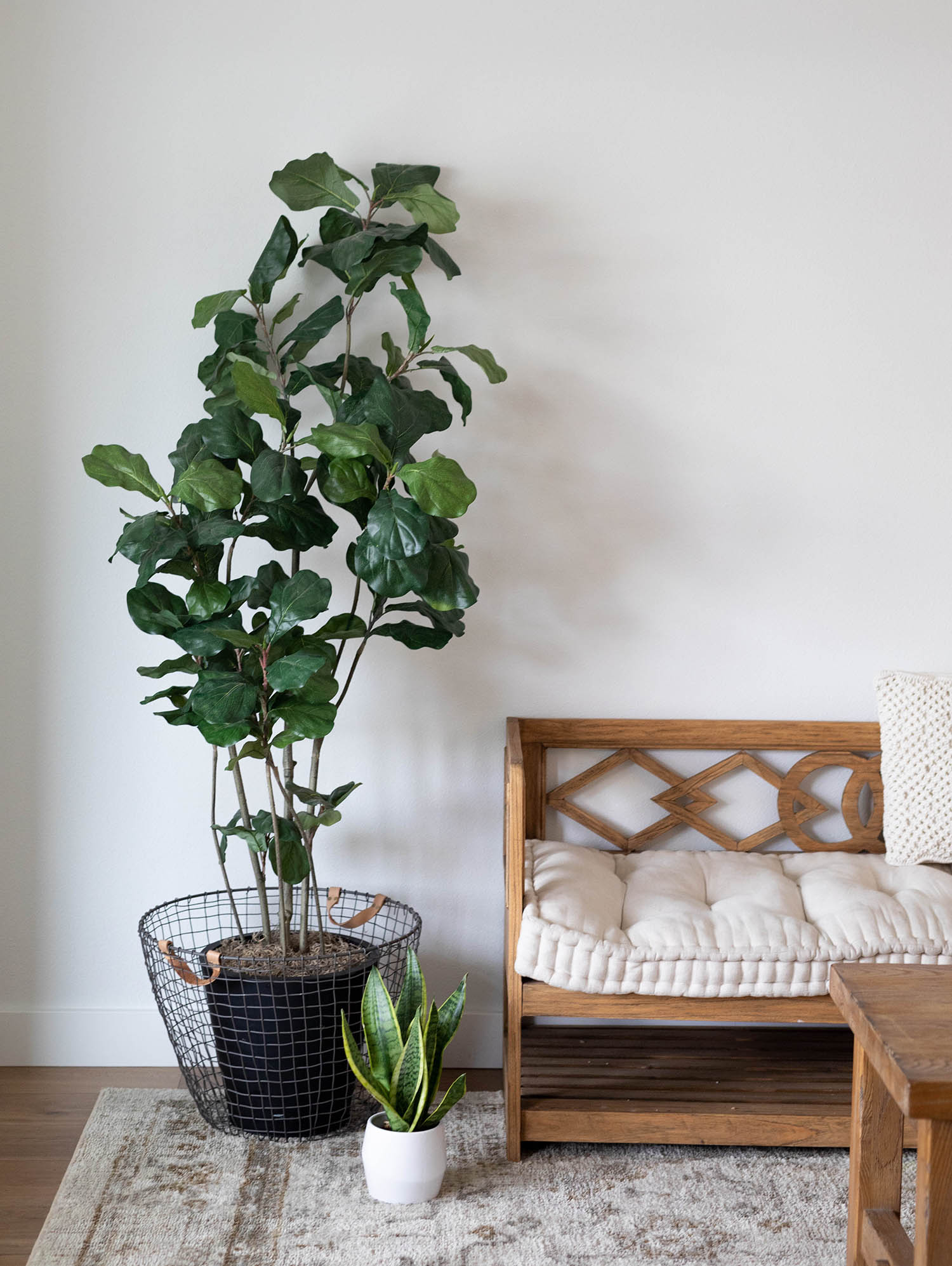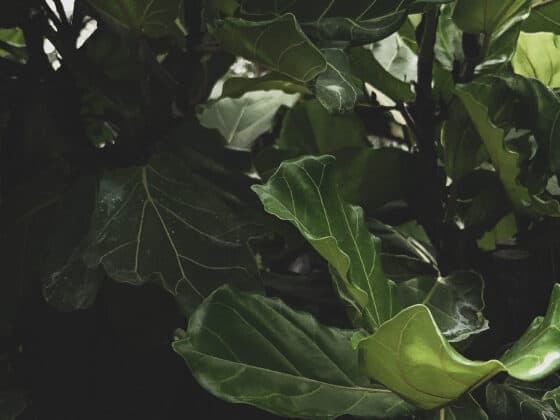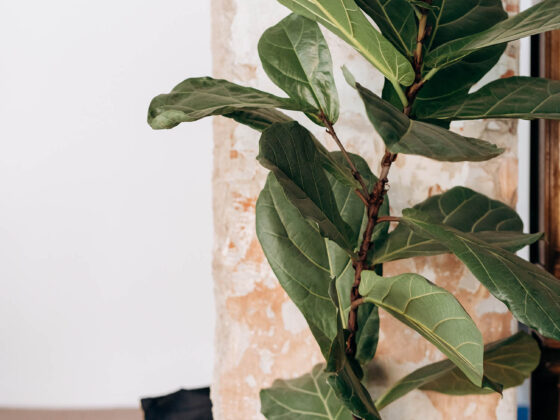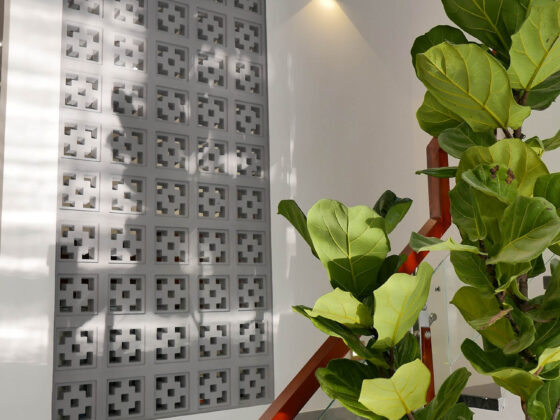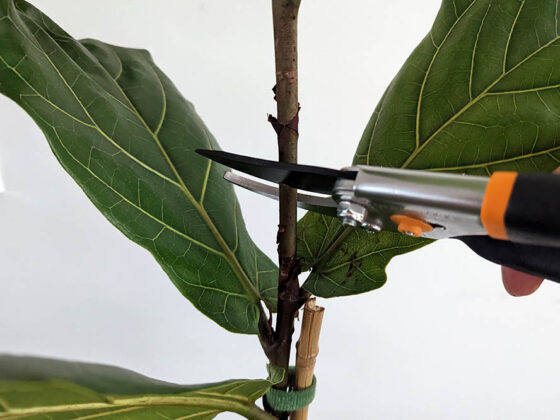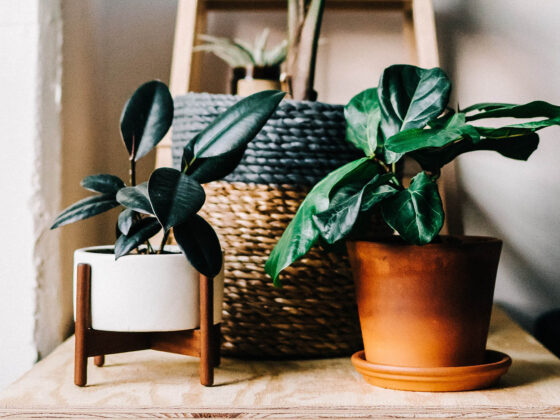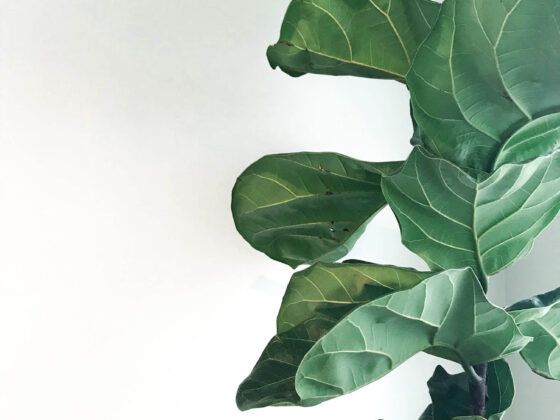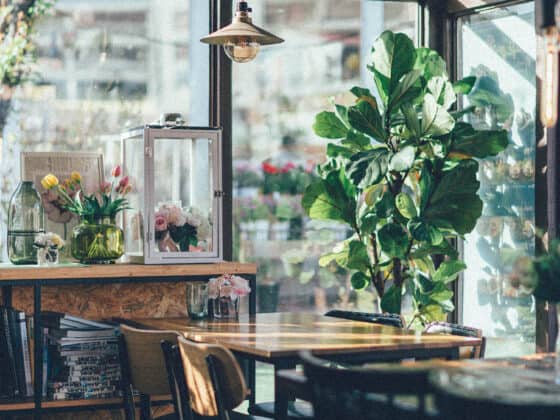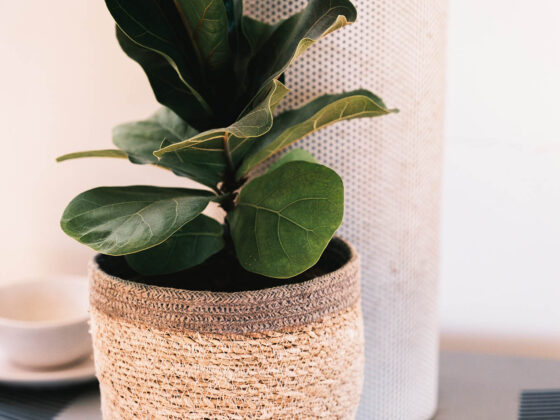Fiddle Leaf Figs are most often sold individually, with just one plant per pot to emphasize their tree-like quality. However, you can occasionally find nurseries that sell several individual plants together in the same pot. This allows even a young plant to have a full, bushy look. If you have a Fiddle Leaf Fig with several individual plants, can you separate them into their own pots?
To divide a Fiddle Leaf Fig that has multiple plants in one pot, root prune in advance to make separating the root balls easier. Once the plant is ready to be separated, remove the plants from their pot and gently separate the root systems for each individual plant. After that, pot the separated stems into their individual containers.
If you want to divide a Fiddle Leaf Fig, it is important to do it in a way that will be minimally disruptive to your plant. Fiddle Leaf Figs are susceptible to wilting or dropping leaves when anything changes in their environment. Splitting them will involve repotting the plant and potentially trimming some of the root balls. This article will explain the best way to divide a Fiddle Leaf Fig without damaging it.
Can Your Fiddle Leaf Fig Be Separated?
Before you take any action to divide your Fiddle Leaf Fig, evaluate whether you are likely to achieve what you want with this project. First, confirm whether you actually have two or more separate plants growing in your pot instead of a single plant with a branching trunk. You should be able to identify individual stems emerging from the soil. The farther from each other they are, the easier it will be to separate them.
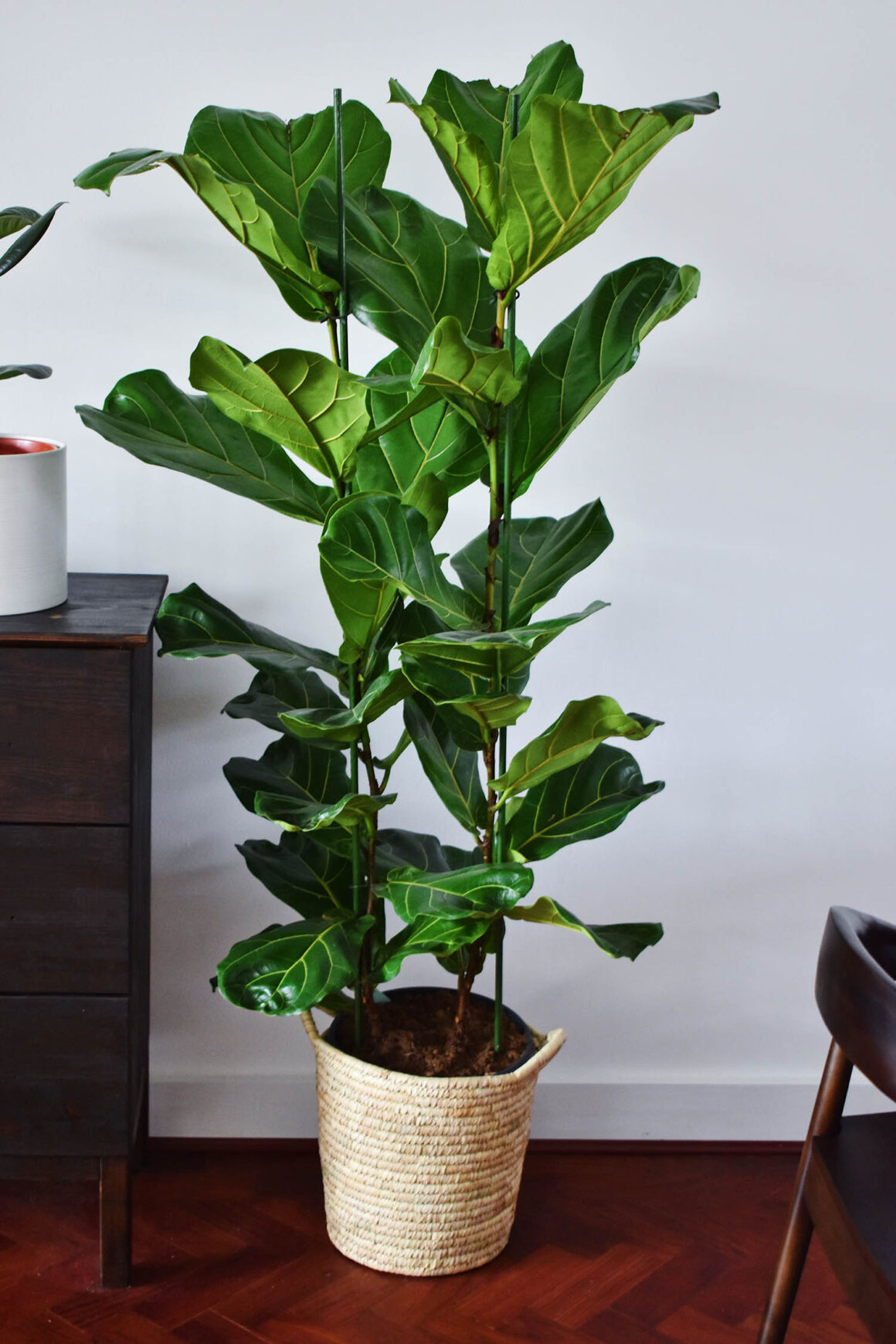
If the multiple plants are growing close together or your Fiddle Leaf Fig has been growing this way for a long time, you may want to reconsider trying to divide it. Roots tend to get entwined easily, and it can be tough and time-consuming to separate them.
If your goal is to have a Fiddle Leaf Fig that looks more tree-like, you could see about trading your specimen for one that has the appearance you prefer. Or, if you’re hoping to use this as a method of propagation, you might consider taking a stem cutting from your Fiddle Leaf Fig instead. Although it will take a long time to get a full-sized plant from a stem cutting, the process is far less likely to damage your plant.
Fiddle Leaf Figs do not adapt to change well, and it is possible that separating it will cause your plant to experience shock and potentially die. Shock in Fiddle Leaf Figs usually results in wilting and leaf drop, which means that the plant can no longer take in as much energy from sunlight. It is important to weigh the risks and benefits of dividing your plant to make an informed decision.
When is the Best Time to Separate Fiddle Leaf Figs?
The best time to divide a Fiddle Leaf Fig is in the spring or early summer, before the start of the growing season. During the summer, plants have the greatest access to sunlight and energy, meaning they will have more resources to devote to recovering from their environment changing.
Dividing a Fiddle Leaf Fig during the fall or winter would be a bad idea since plants are already naturally dormant during this time and are conserving their energy.
How to Divide a Fiddle Leaf Fig
This section will take you through the process of dividing your Fiddle Leaf Fig. If you have divided other plants in the past, the steps will be familiar to you.
An optional step, called root pruning, is used before dividing established trees. Although you can divide a Fiddle Leaf Fig without root pruning first, it is highly recommended to reduce the amount of stress on the plant. The only inconvenient thing about root pruning is that it should be done at least 6 to 8 weeks before splitting the plant.
Optional Prep Step: Root Pruning to Prepare a Fiddle Leaf Fig for Dividing
The advantage to root pruning your Fiddle Leaf Fig is that it reduces the chance of the plant experiencing shock after being divided. Shock occurs because the small feeder roots that support the plant’s main processes can easily be damaged when a Fiddle Leaf Fig is split and transplanted.
Feeder roots are the ones that absorb nutrients and water for a Fiddle Leaf Fig, while the larger roots serve primarily to anchor the plant in place. Although it can be tempting to trim off the smaller roots because they’re finicky and difficult to separate, doing this can lead to root shock. After root pruning, the plant will produce new feeder roots around the root ball that will be separated out.
The best option to root prune a Fiddle Leaf Fig in its pot is to use the method called spading. Use a spade to cut through the roots midway between the individual plants to be separated. You’ll want to estimate where the future root ball of each new plant will be.
Your spade should leave an empty channel that you can fill with a nutrient-rich potting mix or compost. Then water the whole plant thoroughly. This pruning will encourage the plant to create new feeder roots closer to its new root ball.
So, while optional, root pruning not only protects your plant but will also make the process of separating multiple Fiddle Leaf Figs from the same pot. Whether or not you choose to root prune, the following steps will be the same.
Step 1: Prepare Your Tools
You will need a few standard garden tools to separate a Fiddle Leaf Fig, plus a big enough space for the plant to fit horizontally. If your Fiddle Leaf Fig is tall, you may want to enlist someone else to help you with maneuvering while you separate the plant.
- Garden shears or knife
- Containers to pot your separated plants
- Potting mix
- Water
Step 2: Divide Your Fiddle Leaf Fig
Lay the plant on its side, and carefully remove your Fiddle Leaf Fig from its container. Clean off as much potting mix as possible from the root ball, so you’ll clearly see what you’re doing. If you have root pruned your plant, the root balls of each individual plant should be somewhat defined. The root systems may be very entwined and difficult to separate if you don’t clean them off first.
Gently pull the root systems apart, doing your best to protect the roots from breaking. This process requires patience and persistence, but taking the time to keep the original roots undamaged now will result in a plant that recovers much more quickly. If you need to trim some roots, be sure to use sterilized garden shears so you don’t introduce bacteria or fungus when you cut them.
Step 3: Pot Your Separated Fiddle Leaf Figs
The new pots should be correctly sized to the root balls of your separated Fiddle Leaf Figs, with no more than 2″ of space around the roots. Be sure they have adequate drainage as well.
For potting mix, I recommend using a cactus and succulent mix for Fiddle Leaf Figs because it allows water to drain freely and helps prevent overwatering. (Read more about ideal soil for Fiddle Leaf Figs here.)
Place a layer of potting mix in the bottom of the container. This layer should be thick enough that the top of the root ball will be a couple of inches below the lip of the pot once it is filled with soil. Center the roots in the planter (having help can be useful for this step) and fill in the potting mix around the trunk. Water thoroughly, and then add more potting soil if needed.
Caring for Separated Fiddle Leaf Figs
While your Fiddle Leaf Figs are recovering from being divided, try to keep them in conditions consistent with what they experienced before. Keep them in the same location, at least until they have established themselves in their new containers, and provide the same type of care. Do not fertilize or prune during this time, as those things add unnecessary stress.
It’s possible that your plant will experience some level of shock even if you have taken precautions against it. If your Fiddle Leaf Fig wilts or loses leaves, don’t panic. The symptoms of shock usually look worse than they really are. Just be consistent with meeting your plant’s needs, and over time it should recover and start to put out new growth again.






